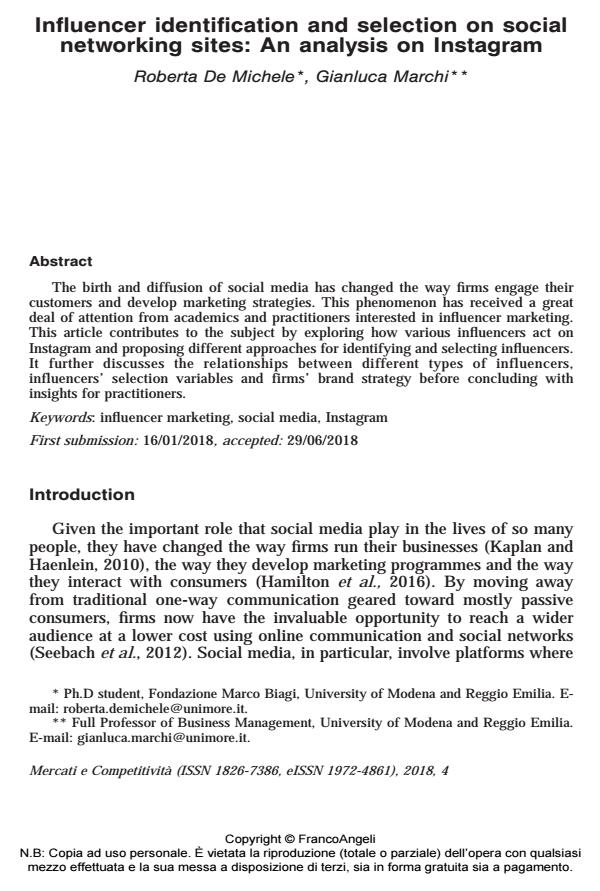Influencer identification and selection on social networking sites: An analysis on Instagram
Titolo Rivista MERCATI & COMPETITIVITÀ
Autori/Curatori Roberta De Michele, Gianluca Marchi
Anno di pubblicazione 2018 Fascicolo 2018/4
Lingua Inglese Numero pagine 25 P. 129-153 Dimensione file 500 KB
DOI 10.3280/MC2018-004008
Il DOI è il codice a barre della proprietà intellettuale: per saperne di più
clicca qui
Qui sotto puoi vedere in anteprima la prima pagina di questo articolo.
Se questo articolo ti interessa, lo puoi acquistare (e scaricare in formato pdf) seguendo le facili indicazioni per acquistare il download credit. Acquista Download Credits per scaricare questo Articolo in formato PDF

FrancoAngeli è membro della Publishers International Linking Association, Inc (PILA)associazione indipendente e non profit per facilitare (attraverso i servizi tecnologici implementati da CrossRef.org) l’accesso degli studiosi ai contenuti digitali nelle pubblicazioni professionali e scientifiche
The birth and diffusion of social media has changed the way firms engage their customers and develop marketing strategies. This phenomenon has received a great deal of attention from academics and practitioners interested in influencer marketing. This article contributes to the subject by exploring how various influencers act on Instagram and proposing different approaches for identifying and selecting influencers. It further discusses the relationships between different types of influencers, influencers’ selection variables and firms’ brand strategy before concluding with insights for practitioners.
Parole chiave:Influencer marketing, social media, Instagram
- Cutting Edge Research Methods in Hospitality and Tourism Irina Valerie Gewinner, pp.173 (ISBN:978-1-80455-064-9)
Roberta De Michele, Gianluca Marchi, Influencer identification and selection on social networking sites: An analysis on Instagram in "MERCATI & COMPETITIVITÀ" 4/2018, pp 129-153, DOI: 10.3280/MC2018-004008